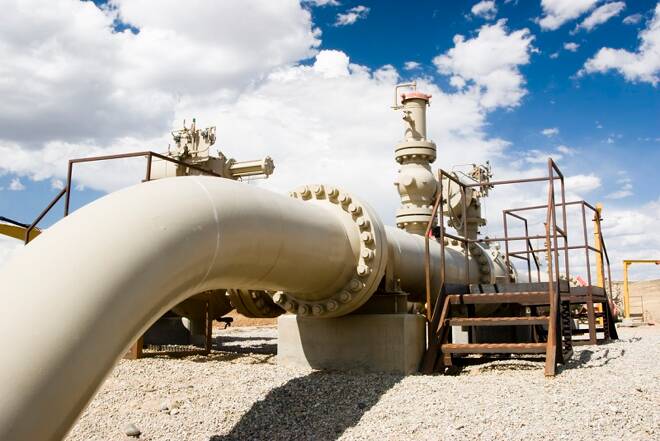Advertisement
Advertisement
Natural Gas Price Fundamental Daily Forecast – Bulls Getting Mixed Messages From 8 to 15 Day Forecasts
By:
The weather data for July 6-15th remains hot enough to be considered bullish, although not quite as impressive in recent data.
Natural gas futures are putting in a mixed performance but are still in a position to finish higher on Friday and for the week. Dampening the bullish tone seen earlier in week are forecasts calling for lower cooling demand. Both the American and European weather models dropped cooling demand from the outlook overnight, according to NatGasWeather.
At 19:30 GMT, September natural gas is trading $3.665, up $0.033 or +0.91%.
Short-Term Weather Outlook
According to NatGasWeather for July 2-8, “Hot high pressure continues over the West and Texas with highs of 90s to 110s. However, national demand will still ease the next several days as a slow moving weather system tracks across the Great Lakes and East with heavy showers, thunderstorms, and comfortable highs of 70s to lower 80s.”
“National demand will increase next week due to hot conditions over the West and warm conditions over the South and East. Although, there were cooler trends overall due to the weather system across the Great Lakes and Northeast coming stronger/cooler. Overall, moderate-high demand the next 7-days.”
Mid-Term Weather Outlook
“Most of the lost demand (seen in the U.S. and European models) is across the northern U.S. next week as weather systems over southern Canada push further across the border,” the firm said. Overall, the pattern “remains hot enough to be considered bullish” from next Tuesday through July 15 but is “not quite as impressive in recent data after numerous Bcf in demand were shed for next week.”
Energy Information Administration Weekly Storage Report
According to the U.S. Energy Information Administration (EIA), natural gas in storage rose 76 billion cubic feet (bcf) during the week-ended June 25.
NGI wrote that estimates ahead of the Energy Information Administration (EIA) were close to the five-year average injection of 65 Bcf and last year’s 73 Bcf build.
NGI also reported a Bloomberg survey of 11 analysts produced a range of estimates from 59 Bcf to 75 Bcf, with a median of 68 Bcf. Reuters polled 18 analysts, whose estimates were as low as 55 Bcf and had a median infection of 68 Bcf. NGI modeled a 67 Bcf build.
The injection boosted stockpiles to 2.558 trillion cubic feet (Tcf), which is still 5.3% below the five-year average of 2.701 Tcf for this time of year.
Short-Term Outlook
Traders will be watching the weather over the weekend, while Monday is a U.S. holiday. This could lead to volatile trading conditions when the markets reopen on Tuesday.
Looking ahead, overall, the weather data for July 6-15th remains hot enough to be considered bullish, although not quite as impressive in recent data after numerous Bcf in demand were shed for next week.
Tropical Storm Alert: “Also of great interest is where tropical cyclone Elsa ends up early next week after tracking through the Caribbean the next few days. Recent forecasts showed Elsa’s track towards the eastern Gulf of Mexico/Florida West Coast. This system has the potential to bring rain and cooling to the southern U.S., as well as delay LNG cargoes. Although, this could be offset by weaker production in the Gulf of Mexico.”
Demand could drop if the tropical storm hits Florida and leads to a loss of power or cooler temperatures. At this time, the cone of influence shows the tropical storm riding up the West Coast of Florida, where there aren’t any gas platforms or refineries, then turning inland.
If the tropical storm heads into the Gulf of Mexico or the Florida Panhandle then it could affect LNG shipping. Once again a bearish move. Lower production could offset some of this bearishness.
For a look at all of today’s economic events, check out our economic calendar.
About the Author
James Hyerczykauthor
James Hyerczyk is a U.S. based seasoned technical analyst and educator with over 40 years of experience in market analysis and trading, specializing in chart patterns and price movement. He is the author of two books on technical analysis and has a background in both futures and stock markets.
Did you find this article useful?
Latest news and analysis
Advertisement
